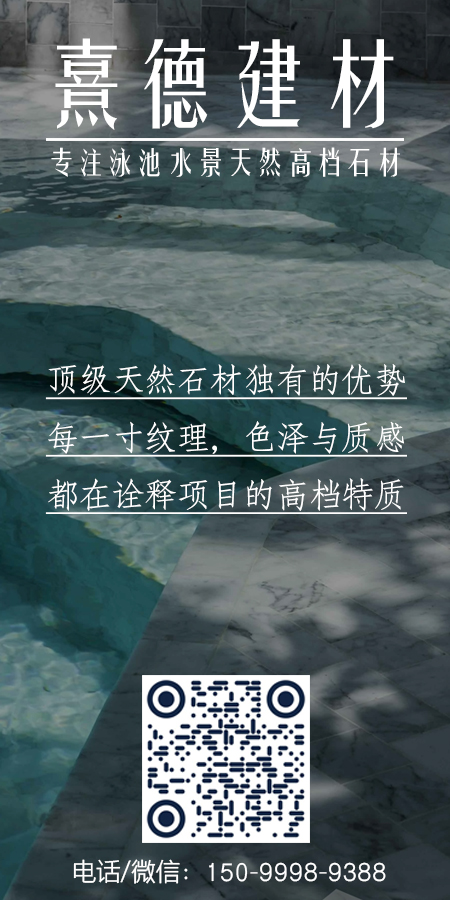| 公司: | Zaha Hadid Architects (ZHA) | 类型: | 建筑 |
|---|---|---|---|
| 地区: | 中国 | 标签: | 文化空间 | 展览空间 |
深圳市光明区的深圳科技馆于今日正式开放。这座全新场馆将展示科学探索历程、突破性研究成果以及未来科技的可能性,致力于探索科学的力量与塑造未来的技术进步。
作为粤港澳大湾区,这个人口近亿的全球最大都市区的旗舰级文化地标,该科技馆将与区域内顶尖科技企业、高等院校及科研机构深度合作,既致力于培育创新力量,更系统展现推动深圳成为全球科技前沿城市的持续创造力。
The Shenzhen Science & Technology Museum in the Guangming District of the city opens today. Showcasing the scientific endeavour, ground-breaking research and future possibilities of technology, this new institution will explore the power of science and the technological
advancements defining our future.
Designed as a leading visitor destination of the Greater Bay Area — the world’s largest metropolitan region with its population approaching 100 million residents — the museum will collaborate with the region’s renowned tech industries, universities, schools and research centres to cultivate innovation, as well as present the ongoing inventiveness that
places Shenzhen as a global leader in the development of new technologies.
该馆毗邻深圳地铁光明站,其设计呼应了区位特点,一个坚实的球体建筑面朝城市,界定了科学公园东南角的边界。
建筑体量向西延伸至公园,演变为层层叠落的动态露台空间,俯瞰园景。这些露台作为环绕中央中庭的室内展厅的功能延展,共同构筑了一个重要的城市公共空间。
Adjacent to Guangming Station of Shenzhen’s metro network, the design responds to its location as a solid, spherical volume facing the city and defining the southeast corner of the new Science Park.
Extending westwards into the park, the building’s volume stretches and transforms into a dynamic sequence of outdoor terraces overlooking the park. These terraces are functioning extensions of the interior galleries that surround the grand central atrium, creating a significant new civic space for the city.
深圳科技馆总建筑面积中,常设与临时展厅达3.5万平方米,另设6000平方米沉浸式剧院与科技影院,以及5400平方米的科研实验室、教育空间与创新中心。此外,场馆还配备3.4万平方米的公共配套空间,包含观众服务区、仓储空间及设备维护车间等功能单元。
The Shenzhen Science & Technology Museum incorporates 35,000 sq. m of permanent and temporary exhibition halls and galleries, together with 6,000 sq. m of immersive theatres and cinemas, as well as 5,400 sq. m of research laboratories, educational facilities and an innovation centre. Additionally, 34,000 sq. m of visitor amenities and storage join production
and maintenance workshops.
深圳科技馆的众多展厅从其核心中庭的地面与墙体自然生长而出,另有部分展厅悬浮于宏阔中庭的壮丽公共空间之上。这些精心设计的空间形态通过视觉引导,自然而然地带领参观者穿梭于博物馆相互关联的各个展区之间。
The many galleries within Shenzhen’s new scientific institution emerge from the floor and walls of its central atrium, while other galleries float above the awesome scale and composition of the atrium’s grand public space, each giving visual clues that intuitively direct visitors through the museum’s series of interconnected spaces.
科技馆的中庭以其多重视角与独特材质,为每位参观者的探索之旅提供了激动人心的起点。巨大的玻璃幕墙面向公园,巧妙消融了室内外界限——不仅将自然光与园景引入建筑核心,更让人类无尽的好奇心在此自由徜徉。
The atrium's multiple perspectives and materiality also provide a thrilling launching point for every visitor’s journey of discovery. With its large, glazed wall facing the park, the atrium blurs the boundary between inside curiosity — into the heart of the building.
在被动式环境策略的指导下,设计团队运用先进的计算机模拟技术,针对深圳亚热带气候特点——包括年度太阳辐射、温湿度、盛行风、空气质量等变量条件——对建筑形态、空间布局及围护结构进行了持续测试与优化。最终确定的建筑朝向,在最大限度减少中庭太阳得热的同时,完美保留了面向公园的全景视野。
Guided by passive environmental strategies, the design process employed advanced computer simulations to test and refine the building’s form, spaces and envelope for optimal performance within the annual solar radiation, temperatures, humidity, prevailing winds, air quality and other variable conditions of Shenzhen’s subtropical climate and location. The
building’s orientation has been determined to minimise solar heat gain within its central atrium while maintaining panoramic views of the park.
科技馆各层露台的设计兼具功能性与人文关怀:其遮阳结构有效阻隔直射阳光,在提升中庭玻璃幕墙环境性能的同时,为参观者创造了一系列可俯瞰公园的荫蔽休憩空间。这些错落有致的户外区域,让观众在观展之余获得静思与放松的场所。
Designed to shield the atrium’s glazed façade from direct sunlight to enhance visitor comfort, the terraces on each floor improve environmental performance and create a series of sheltered outdoor spaces overlooking the park; giving visitors places for rest and
contemplation while exploring the exhibitions.
建筑外立面采用不锈钢板系统,在幕墙与外墙之间形成通风空腔,有效减少太阳辐射与恶劣天气的直接影响。该体系延伸至屋顶,并整合光伏发电装置,实现现场可再生能源利用。
Mitigating direct exposure to the elements and solar radiation, a system of stainless-steel panels creates a ventilated cavity between the façade and the external walls. This system extends to the roof, which also incorporates photovoltaics for on-site energy generation.
建筑外立面的色彩渐变由深蓝过渡至多层次的灰调,既营造出天体在太空中运行的动态美感,又为建筑增添了丰富的立体质感。
The façade’s colour gradient transitions from deep blue to various shades of grey, evoking a dynamism of celestial bodies orbiting in space, while adding depth and texture.
这座总建筑面积达128,276平方米的科技馆以中国绿色建筑三星级最高认证为目标,通过被动式设计策略与智能管理网络驱动的高效系统协同运作,预计将实现建筑综合能耗降至每年15.47千克标准煤/平方米,同时通过将运营用电需求控制在约125.89千瓦时/平方米/年,达成显著的减排效益。
Aiming to achieve the highest three-star rating of China’s Green Building Evaluation Standard, the 128,276 sq. m museum’s passive design features combined with smart management networks operating high-efficiency systems are projected to reduce the building’s comprehensive energy consumption to 15.47 kgce/sqm per year, with a subsequent reduction in emissions achieved by lowering the museum’s operational electricity demand to an estimated 125.89 kWh/sqm a year.
该工程采用数字孪生建造技术,通过BIM+3D扫描技术将复杂曲面精度控制在毫米级。遍布建筑的关键节点监测网络实现了施工全过程与数字模型的实时同步校验,同时采用机器人多点成形技术,确保复杂曲面精准契合设计要求。
The project’s digital twin construction process employed BIM+3D scanning technology to maintain and control tolerances of complex surfaces within millimetres. A comprehensive network of key nodes throughout the building enabled the synchronous verification of all construction from the digital simulation in real-time, while robotic multi-point forming technology precisely shaped the complex surfaces to the exact
requirements of the design.
▽东立面图
▽北立面图
▽南立面图
▽西立面图
▽一层平面图
▽二层平面图
▽三层平面图
▽四层平面图
▽五层平面图
▽六层平面图
▽屋顶层平面图
▽长截面
▽短截面
▽位置平面图
Client: The Bureau of Public Works of Shenzhen Municipality
Operator: The Shenzhen Association for Science and Technology
Design: Zaha Hadid Architects (ZHA)
Consortium Local Design Institute: Beijing Institute of Architectural Design Co. Ltd. (BIAD)
Consortium Lead (ZHA) Team:
ZHA Principal: Patrik Schumacher
ZHA Project Directors ZHA Commercial Director : Paulo Flores, Simon Yu : Charles Walker
ZHA Project Architect: Edgar Payan
ZHA Project on-site Associate: Jinqi Huang
ZHA Project Senior Associate: Lydia Kim
ZHA Project Package Leads: Juan Montiel, Niran Buyukkoz, Saman Dadgostar, Julian Lin,
Richard Wasenegger.
ZHA Project Team:, Berkin Islam, Cheryl Lim, John Kanakas, Sven Torres, Michael On, Yuxuan
Zhao, Enoch Kolo, Karina Linnsen, Boyan Hristov, Bechara Malkoun, Mansel Haynes, Haohao
Chen, Alex Nap, Harry Spraiter
ZHA Competition Team:
ZHA Project Design Directors: Paulo Flores, Simon Yu
ZHA Project Architects: Karoly Markos, Edgar Payan
ZHA Design Leads: Niran Buyukkoz, Saman Dadgostar.
ZHA Project Team: Jinqi Huang, Berkin Islam, Billy Webb, Cheryl Lim, Christos Koukis,
Federico Fauli, Juan Montiel, Jurij Licen, Michal Wojtkiewicz, Bogdan Zaha, Michael On,
Yuxuan Zhao, Enoch Kolo, Nastasja Mitrovic, Thomas Bagnoli
Competition Stage Consultants:
Acoustics Consultants: Marshall Day Acoustics
Exhibitions Consultants: Art of Fact
Cinema Consultants: Teecom
Landscape Consultants: Gillespies
Specialist Consultants (Schematic Design Stage):
Façade Consultant: GYAC (Shanghai) Co. Ltd.
Acoustics Consultants: Acoustics & Theatre Design Division, East China Architectural Design
& Research Institute Co. Ltd.
Green Building Consultants: Jorjun Green Building Technology Co., Ltd, Guangdong
Exhibitions Consultants: Art of Fact
Cinema Consultants: Teecom
Landscape Consultants: Gillespies
Specialist Consultants (Preliminary Design Stage):
Local Design Institute (Structure & MEP): Capol International & Associates Group
Local Design Institute (Architectural): Beijing Institute of Architectural Design Co. Ltd
Façade Design Consultants: Dadi Facade Technology Co. Ltd.
Interior Design Consultants: J&A (Jiang & Associates)
Exterior Lighting Consultants: GD-Lighting Design Consultancy Co. Ltd.
更新日期:2025-05-15 17:38:17
非常感谢 Zaha Hadid Architects (ZHA) 带来的精彩项目, 查阅更多Appreciations towards Zaha Hadid Architects (ZHA) for sharing wonderful work on hhlloo. Click to see more works!







































